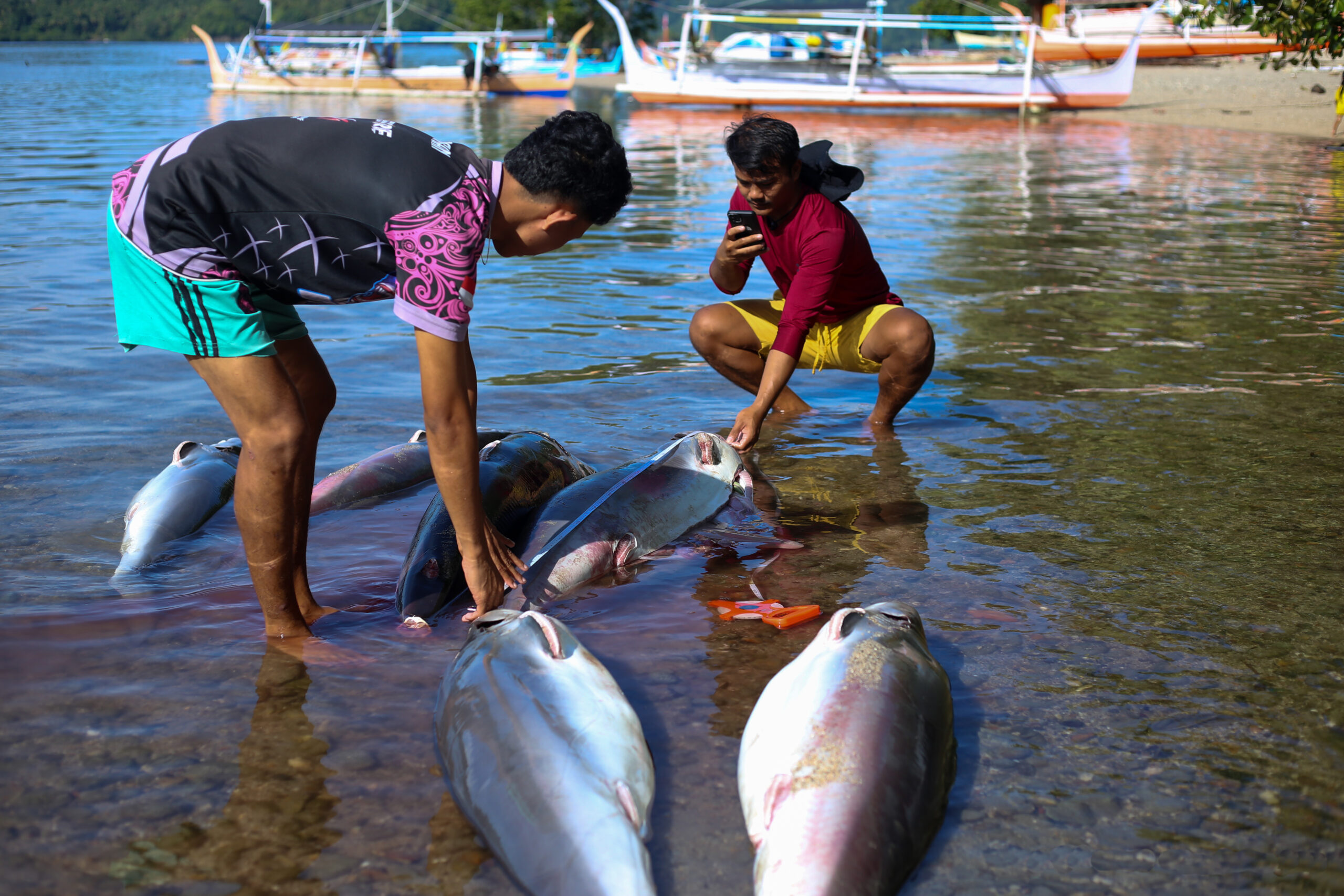Small-scale shark fishery in Sangihe Islands, Indonesia
Sangihe Islands is located in the northern part of North Sulawesi and the southern part of the Philippines. Most residents live in the coastal area, and their livelihood and food security rely on the marine ecosystems. We found a unique community on Batuwingkung Island where almost 90% of the fishers have a high dependency on shark fishing from generation to generation. They are all small-scale fishers using a small boat (approx. 9×1 m) and a set of longlines with approximately 45-75 hooks.

Project location at Batuwigkung Village, Sangihe Islands, North Sulawesi, Indonesia. Image ©YAPEKA
We conducted a socio-economic and ecological survey of the fishers, traders, and other stakeholders to understand shark fishery activities. We are also capturing the catch using landing site monitoring to analyze the catch trend with the help of local enumerators. We identified the species name, fishing effort, and fishing location and measured the weight, length, and sex type of the catch.
From the landing data, we found that Batuwingkung fishers target the shark species Carcharhinus spp. locally called ‘hiu manehe’, including silky shark C. falciformis (Appendix II CITES), dusky shark C. obscurus, and copper shark C. brachyurus. These species have a high value of meat and fins compared to other species. In Indonesia, catching and trading the species of Appendix II CITES are regulated by the government through Permen KP No 20 tahun 2022.

The local enumerators are measuring the length of the shark catch, species Carcharhinus falciformis. Photo by Jhonli Mamuka | © YAPEKA

The local enumerators are measuring the weight of the shark catch, species Carcharhinus falciformis. Photo by Jhonli Mamuka | © YAPEKA
Today, the permits and regulations are getting better as there are legal traders associated with the shark fishers to catch the sharks based on the quota given by the government. The supervision is under the authority of the Coastal and Marine Resources Management Center (BPSPL), Supervision of Marine and Fisheries Resources (PSDKP), and Fish Quarantine Center for Quality Control and Safety of Fishery Products (BKIPM). Now, we are trying to figure out the market chain for the shark product, which led to the evidence of the importance of shark meat for local food (both Sangihe and Manado) and the consumption of the fins outside North Sulawesi.
